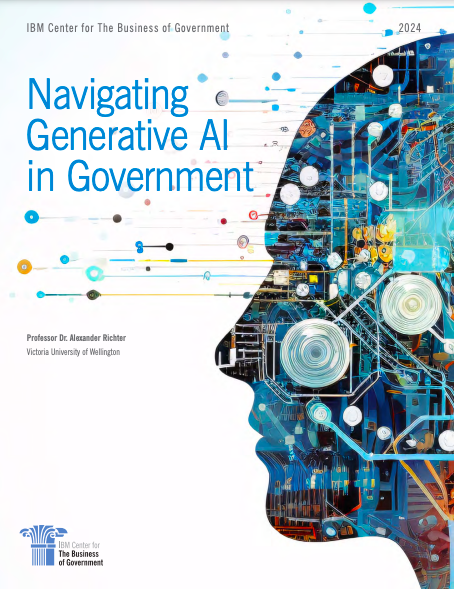Maximising data efficiency and effectiveness for public good
Data is more than just statistics and dashboards; it is the lifeline of public services and wellbeing of citizens. Against this backdrop, the Welsh Government’s Chief Statistician, Stephanie Howarth, says she is "constantly looking at new ways data can be harnessed more efficiently, effectively and safely” to improve the Welsh public sector.
As Chief Statistician, Howarth admits she “wears a lot of hats”. As well as being responsible for the production of official statistics and the implementation of standards on statistical data quality, trustworthiness and public value within the Welsh Government, Howarth is co-director of ADR Wales – the Welsh arm of the UKRI-funded ADR UK that seeks to maximise safe data reuse for public good.
She shares some of the key ways the Welsh Government is improving data efficiency and effectiveness for public good - and why they are at "a real turning point" in how it uses data.
Behind the scenes
Internally, Howarth and her team are currently using Reproducible Analytical Pipelines to improve the efficiency and quality of statistical processes and to add more value in other areas of the business.
“Over the years, some of our processes have been quite old and clunky; a lot of manual steps and opportunities for errors to creep in. We’ve been looking at being more efficient in the way we produce analysis using Reproducible Analytical Pipelines - code based approaches to using data for analytical purposes so that you're taking away those manual steps, and massively reducing the amount of time it takes a few things, but also improving quality as well.”
purposes so that you're taking away those manual steps, and massively reducing the amount of time it takes a few things, but also improving quality as well.”
So far this has been implemented across four projects, where it has reduced time spent on processes from 220 hours to 3.4 hours; the equivalent of saving five weeks worth of someone's time.
Not only that, it has ensured better quality data in a more timely manner while boosting resilience, morale and producing new skills. “It has given us that opportunity to do more of that value-added work for colleagues in the more policy-facing roles in the Welsh Government,” Howarth explains.
Data for public good
The Welsh Government is also using geospatial data to drive more effective and efficient public services. DataMapWales is an open data portal that provides a shared platform to members of the public and public authorities, enabling information to be shared in a common format in real-time.
It is used to inform policies, but also has very practical uses in emergencies; as highlighted in the JIGSO project, which makes real-time data available to the resilience community during emergencies. Using the DataMapWales platform, resilience organisations are able to access real-time information on vulnerable people, allowing them to target where they distribute their resources and prioritise their response, Howarth explains.
This has reduced the time to capture and distribute key intelligence to responders at the scene from over eight hours to around three minutes.
It has become clear that the richness of data held within the Welsh public sector could be used to support a wide range of analyses. For this reason, the Welsh Government has partnered with Swansea and Cardiff University through ADR Wales to maximise the reuse of anonymised, linkable data for policy relevant research by helping to analyse and evaluate policies.
A recent example is the Welsh Flying Start project, which seeks to protect the life chances of young children by mitigating the impact of poverty. When looking to expand the programme to all two year olds, Howarth said they linked childcare data on the Flying Start programme to school assessment data and found that those with higher attendance on the programme met their expected outcomes in all areas of learning - much more often than those with lower attendance.
“That more sophisticated reuse of administrative data, and the bringing together of research, helped to provide additional insight and inform the decision on how to expand the rollout of the programme.”
Old data, new tricks
“Thinking about new ways of doing things using data is really at the heart of what we’re doing right now,” Howarth says. Her team works closely with the Office for National Statistics (ONS), which is consulting on new ways of producing population statistics by moving away from the Census-based approach.
Reflecting on this work, Howarth says: “I think we're at a real turning point now in terms of data strategy. We've always produced a lot of our fundamental statistics about society, but now we are really looking at how we can do this differently and use different types of sources of data. I think that's a really great opportunity to think about how we can do things in a more timely way, potentially producing better quality statistics.
“We've got so much more data available, we've got the data sharing legislation that we might not have had previously and user needs have changed. We are now at a point where we can really, fundamentally change how we produce some of our key statistics about the country.”
Of course, this kind of progress must be balanced against the risk of losing public buy-in, she adds. “The Census is huge and it’s something that everyone gets involved in.” Ultimately, however, “the benefits of doing things differently might outweigh that,” she says.
Howarth is also looking carefully at how her team is disseminating their data with a focus on better citizen engagement. “We have a website called Stats Wales, which is an open data platform, where you can look at the tables on there. The platform itself is pretty old and creaky now so we're currently in the process of refreshing it, which gives us an opportunity to build a much more user-centred approach than we've ever had before.”
Howarth is looking at innovative ways of making aggregate data available to people in new forms where they can reuse it, and where it is more accessible for citizens, think tanks, or public sector organisations. “We are really thinking about how we tailor our different dissemination approaches to meet those needs so other people can then take our data and use it as well,” she says.
It is about ensuring data gets back into citizens’ hands. “There's only so much we can do ourselves,” Howarth explains. “It completes that circle; you give us data, we do something with it and how do we then get it back to you in a form that meets your needs?”






